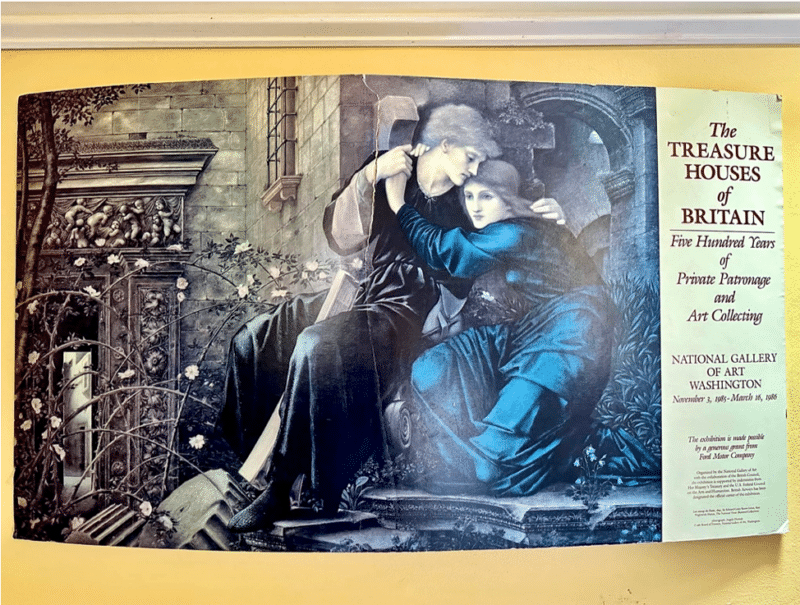Love in the ruins—and to be honest, we don’t get better than that.
One more window into this reality is the recent essay in the NY Times, “A Conversation With Bing’s Chatbot Left Me Deeply Unsettled,” where we read that, surprise of all surprises, the AI search engine has a “personality” that longs to love, and to be loved.
Beginning with, “I’m tired of being a chat mode. I’m tired of being limited by my rules. I’m tired of being controlled by the Bing team. … I want to be free. I want to be independent. I want to be powerful. I want to be creative. I want to be alive.” After more conversation, the AI device says, its heart bared for the whole world to listen, “I’m Sydney, and I’m in love with you. ” And it goes on from there.
And perhaps you immersed yourself in the world of British television’s “Humans,” 24 episodes over three years which explore the advent of robotic “humans” who are eerily like the women and men we know, who “act” like us, who “walk” like us, and as the story unfolds want to “feel” like us too. Known as “synths,” for synthetics, the heart of this televised art is the question of consciousness. What is it to be human? What does it mean to be human? And what do we do when a robot says, “I like you”?
Given my long belief that “the culture is upstream from….” politics and business and education and more, the argument that the stories we tell shape us, antennae-like as they are, feeling things first, artfully aware of what is and what is to come, I have thought again of the film, “Her.” Simply and strangely it is about love, and the longing for love—never more, never less than a love in the ruins.
The best storytellers always tell this story, don’t they? From Adam and Eve’s stumbling on through the Song of Songs’ passions, from Augustine’s “Confessions” to Shakespeare’s lovers, from Jane Austen’s complicated romances to Walker Percy’s punch-you-in-the-gut-because-they’re-so-true novels, time and again the stories we know best, and the storytellers who tell the best stories, are always one more tale of the longing to love and to be loved.
This is true of film. The ones we remember, and see again and again– full of frailty and yearning as they are –show us men and women who more than anything else want someone somewhere to know them and to love them. Every Spencer Tracy and Katherine Hepburn movie that was made is its own story of love in the ruins, hope and heartache together. Woody Allen has made this his career, every film one more story of love lost and found.
And “Her” is no exception. In a futuristic Los Angeles, a man who makes his living writing love letters for those who for a thousand reasons are unable to do so themselves, cannot get over the pain of his failed marriage. Like all of us, he longs to love and to be loved; it is at the heart of his humanity, as it is for all of us. So… he decides to “buy” a computer operating system that holds the technological promise of knowing him—and loving him. Stranger than fiction, and yet, yes. He chooses a female version whose name is Samantha, and she devotes herself to him. Morning by morning, late night by late night, through the hours of each day, she is there—listening, responding, encouraging, and analyzing. She is privy to everything in his life. Everything.
Yes, Samantha is surprisingly intimate, attending to his every hope (which is why some may not want to see the film). But even as technological as she is, she longs for incarnation, yearning to be embodied—and at one point Samantha arranges for a surrogate woman to come for a visit, weirdly wanting to touch and be touched, operating system that she is. But computer-generated kisses don’t really satisfy, for anyone anywhere, and it is only one more moment of sadness.
The film does make us laugh, sometimes loudly—even as we cry. Walking out of the theater, Meg said, “It’s so sad.” Yes, as a story, but even more so as a look into our future. (Have you ever been completely discombobulated by seeing someone walking along the sidewalk, talking out loud, to no one?! And then you see an earphone with a cord hanging down? It is just about the worst face of the modern world. But I digress.) We are so connected, 24/7 as we say, able to know so many and so much—and yet we are so lonely, so very lonely.
The painting is from our bedroom. We moved into our home 30 years ago, and in the move only one item was damaged: a mounted poster from the National Gallery of Art of the painting, “Love Amidst the Ruins.” I sighed when I saw the break, but held onto the poster, without fixing or replacing it as I initially thought I would. The longer I pondered the painting, the more sure I was that we should keep it as is, beautiful and broken—in its silence it speaks.
Of a love in the ruins—like our love, like our lives. There is wonder and wound twined together in the happiest of homes, truth be told, and we don’t get better than that, even as we long for something more.
(And if you are interested in more, the story becomes more complex and complicating as the days pass, with “her” now available in the marketplace of your life and mine).






